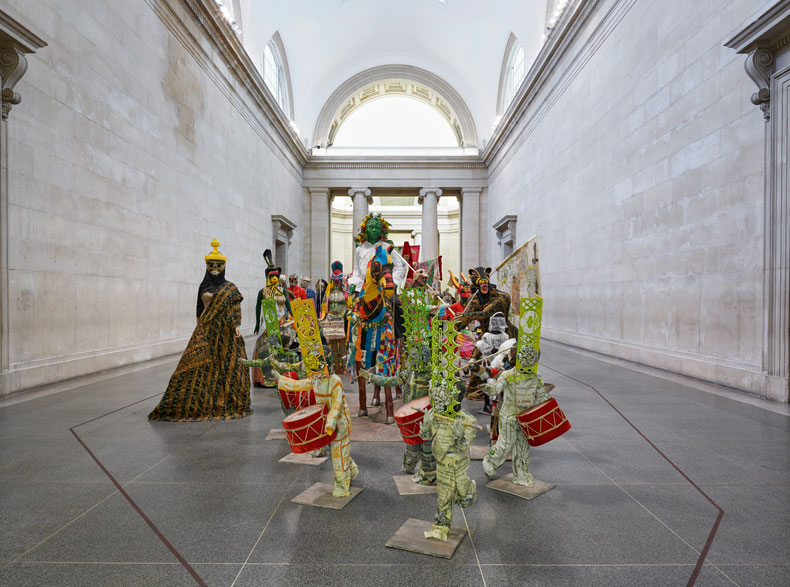Hew Locke
For three decades, Hew Locke’s art has unfolded across continents, materials and ideas. His work – now widely recognised – continues to question systems of power and illuminate their persistence. Apollo’s award acknowledges the artist’s remarkable career, in which he has persistently reshaped the visual symbols that inform our notions of identity and belonging – particularly the symbols of empire.
My first encounter with Locke’s work was 25 years ago, as a recent art-history graduate, when I saw his astonishing installation Hemmed in Two at the V&A. Wedged between the museum’s Doric columns, it was made entirely of cardboard, but had an immense presence. I knew that this was the work of an important artist. Locke had found a singular means of expressing complex and fraught ideas in the simplest materials and methods, with a unique clarity and originality. I have followed his work ever since.
What has stood out to me over the years is how Locke has deployed his distinctive ornamental aesthetic and command of materials to question the regalia and symbols that shape our world. From heraldry and coats of arms to crowns, statues and monuments, his subjects are drawn from the public sphere. His work offers a sustained, original and thought-provoking reimagination of how such emblems can be transformed and understood anew.

Locke’s deep interest in monuments as sites of contested history became a cornerstone of this inquiry. His adornment of a photo of the statue of Edward Colston in Bristol in 2006, for example, presciently recast a civic symbol long before its public reckoning. In other works, the sculptural motif of boats has carried its own potent freight of history, migration and hope. His art has often been characterised in terms of its ornamental excess, yet these qualities are tools of inquiry, a means of exposing how beauty and violence have long been intertwined. Locke draws us into the visual richness of his work only to confront uncomfortable truths. His intricate assemblages transform ornament itself into a critical language: medals and beads, shells and sequins accumulate not only for spectacle but to hint at deeper, concealed histories.
The recent trajectory of Locke’s career, on both sides of the Atlantic, has been remarkable to witness. In Britain, his epic Procession for Tate Britain’s Duveen commission in 2022 marked a career-defining moment. The installation of more than 100 richly adorned figures formed a collective journey through time, resonating deeply with audiences. This success was followed by his election to the Royal Academy, an exhibition at the British Museum (‘What Have We Here?’) and an OBE.
In the United States, Locke became more widely known in 2022 through his Met Facade commission, Gilt: four hollow trophies displayed on the museum’s neoclassical frontage, pointing to the intertwined histories of art and empire embedded in that architectural landmark. In 2024, the Procession made its transatlantic journey from London to Boston.

It was an honour to collaborate with Locke on his exhibition ‘Hew Locke: Passages’, currently at the Yale Center for British Art (until 11 January 2026), and the accompanying monograph, which surveys his career to date. To me, Locke’s work exemplifies the patient unfolding of an artist’s vision in a way that continually meets the demands of the present.
Martina Droth, director of the Yale Center for British Art, New Haven.

